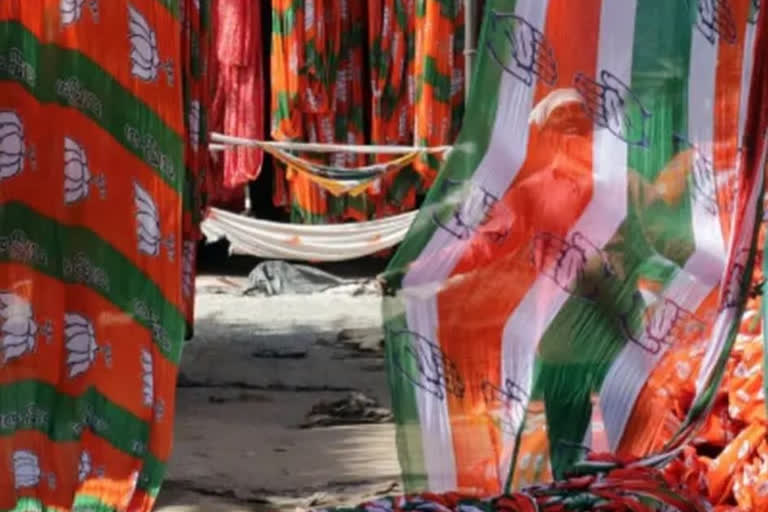Chandigarh: With less than a month left for the upcoming Assembly Polls to commence, all the political parties in Punjab have intensified their campaigns. All the parties also seem to be trying very hard to secure seats from the Malwa region of Punjab, since they very well know that whichever party secures the highest number of seats from here, will be the one forming the government in the state.
Out of total 117 Assembly constituencies of Punjab, Malwa alone has 69 Assembly seats, Majha has 25 and Doaba has 23 Assembly seats, thus leaving the fate of the Punjab Elections in the hands of the Malwa Assembly Constituency. A political party needs 59 seats to form a government on its own in Punjab, and consequently, whichever political party gets the majority in Malwa will eventually form the government in Punjab.
In the 2012 Punjab Assembly elections, the Akali Dal won 34 seats in Malwa, the Congress 31 and the BJP two. Whereas from the Majha constituency, Akali Dal got 11, Congress got 9 and BJP got 5 seats in 2012. Similarly, in Doaba, the Akali Dal won 11 seats, Congress won 6 seats and BJP won 5 seats. 34 seats was a significant contribution.
In the 2017 Assembly elections, the Congress won 40 seats in Malwa, the Shiromani Akali Dal eight, the BJP one and the Aam Aadmi Party 18, placing the victory in Congress' hands. In Majha, Congress got 2 seats, BJP got 1 seat and Shiromani Akali Dal got 2 seats. And from the Doaba constituency, Congress won 15 seats, Aam Aadmi Party won 2 seats, BJP won 1 seat and Shiromani Akali Dal won 5 seats, while the Congress formed an absolute majority government in 2017. It may also be recalled that the Aam Aadmi Party had won 20 seats in the Malwa and occupied the seat of the opposition.
This time, the contest is between Congress, Akali Dal-BSP, BJP-PLC-Shiromani Akali Dal (United), AAP and Samyukta Samaj Morcha (SSM) alliance.
Malwa still remains underdeveloped
Despite having a crucial ole to play in the Punjab elections and having given maximum number of chief ministers in the Punjab assembly elections, Malwa remains a considerably underdeveloped constituency as compared to Doaba and Majha. The region also lags far behind on accounts of the literacy rate and sex ratio, both of which are considered key factors in the development of any region.
Malwa has a literacy rate of 72.3%, Doaba 81.48% and Majha 75.9%. Many other major problems in the region include farmer suicides, rising cancer cases, lack of drinking water, rising sand prices, red locust infestation on cotton crop, unemployment and deteriorating law and order, among others.
Commenting on this, former Information Commissioner Chandra Prakash said that Shiromani Akali Dal always played the Panthak card and Congress kept doing politics in the name of Dalits. "Malwa region of Punjab is significantly connected with the agricultural sector, yet no political party paid attention to the progress of agriculture. In 1998, Prakash Singh Badal had inaugurated the refinery project at Phulokhari in Bathinda district, but even these development projects could not contribute much in the development of Malwa," he said.
He also attributed the underdevelopment of the area to the drug dominance in the area. The results of the upcoming elections in this region are being considered a bit difficult to predict, as some people in the area are considerably angry, while some others are in the support of traditional parties that have been in power in the area for a long time. Some political veterans are with the opinion that people from some backward, rural areas of the region are so angry that they have even boycotted political parties in the villages.
Also Read: Punjab Assembly Polls: Congress promises electric scooters for college going girls
Political parties, in turn, have also put up no-entry signs in the villages, leaving a breeding ground for the possibility of the people having made up their minds to oust the traditional parties in these elections.
The rift between political parties and farmers' organisations
The largest cadre influencing the vote bank in the Malwa constituency is the farmers' organisations. These organisations have a good hold on the village level and a large number of people are associated with them. One is Bharti Kisan Union Ekta, Ugrahan and the other is Bharti Kisan Union, Sidhupur, with large cadre of its own in the villages. After the announcement made by both the Kisan Jathabandis not to participate in the elections during the Kisan Andolan, the hold of these Jathebandi in the villages was further strengthened, which is a major alarm bell for the political parties during the Punjab Assembly elections.
Similarly, the Dera Sacha Sauda Sirsa also has a lot of influence, while it plays an important role in every election. Followers are regularly instructed by the political wing of the Dera to support certain political parties, and politicians are increasingly involved in the its activities in order to strengthen the vote bank.
Out of total 23 districts of Punjab, 15 districts are in Malwa, including Ferozepur, Muktsar, Faridkot, Moga, Ludhiana, Malerkotla, Bathinda, Mansa, Sangrur, Patiala, Fatehgarh Sahib, SAS Nagar, Ropar, Barnala and Fazilka. The population in the Malwa belt is a mixture of farmers and Dalits, making caste and religion a crucial factor at play.



